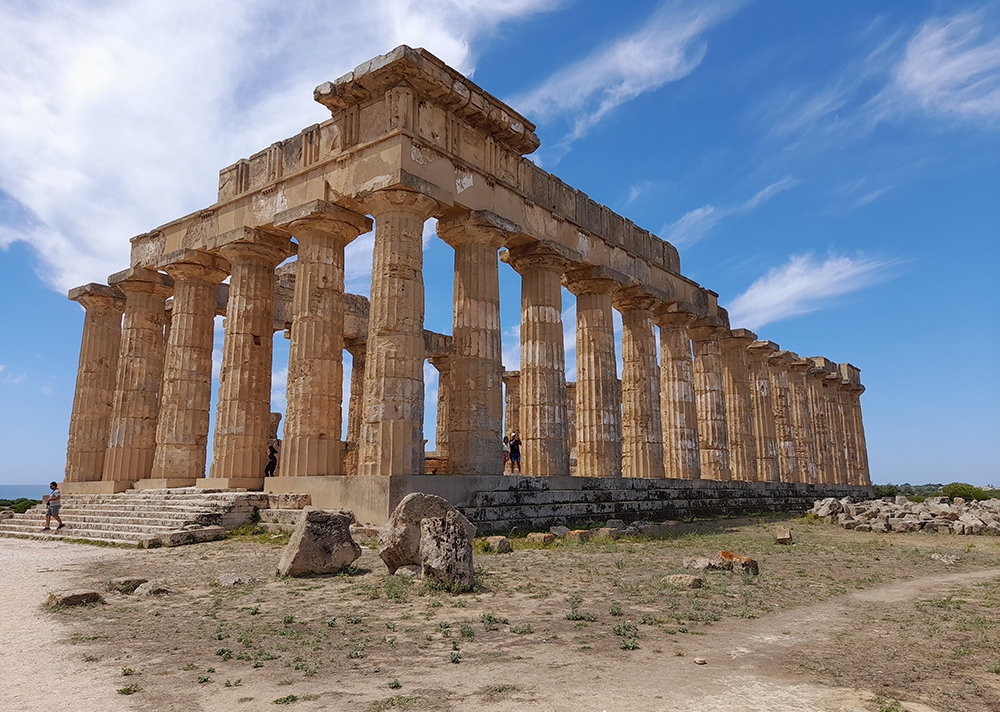A walk between nature and archeology in Selinunte, the largest archaeological site in Europe. We will hike through the temples of the eastern hill and the acropolis with its amazing view on the sea; we will also visit some areas that are little known to the general public, such as the Malophoros shrine.
- How to book: call or send a WhatsApp message to the number +39-320-9593171
- Meeting time: to be arranged according to your needs, subject to my availability
- Meeting point: the ticket office of the archaeological park (Google Maps)
- Duration: 3-4 hours approx.
What’s included?
Guided tour with a professional tour guide
What’s extra?
- Entrance ticket to the archaeological site
What to bring
- Comfortable sportswear in layers
- Comfortable shoes (trekking or sneakers - No flipflops!)
- Long trousers
- A backpack for your personal items
- Trekking poles (not essential but useful)
- Water and snacks
In summer: Sunglasses, Sunscreen, Summer hat
In winter: Winter hat + scarf/neck warmer, A rain/wind jacket, A change of clothes in case of rain
Important information
Soft guided hiking leading to archaeological wonders
Recommended for active and healthy people who enjoy hiking
Not suitable for small children or anyone with walking difficulties
Information about Selinunte
Selinunte was the westernmost Greek city-state in Sicily, situated on the border between Phoenician and Greek territories. This unique location led to the city's wealth through trade with the Carthaginians, but at the same time, it was also the cause of its downfall. The prosperity of the city is evident today through the remains of numerous temples, some of which were reconstructed in the 20th century. Selinunte is located in the territory of Castelvetrano, an area known for producing excellent-quality extra-virgin olive oil, particularly the Nocellara del Belice variety (“Castelvetrano” extra-virgin olive oil). Surrounding the site is an endless expanse of olive trees as far as the eye can see, making it one of the most important locations for the production of table olives and extra-virgin olive oil.



